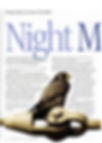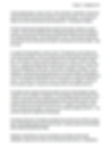
American Kestrel Nest Survey NYC
Bob got his PhD studying the NYC environment, and has done bird migration research in many parts of NYC, from Central Park to the top of the Empire State Building at night to Southeast Asia (Malaysia and Thailand dating back to 2000) and central Asia (Nepal and Israel dating back to 1999).
Bob's publication are not available for mobile. Please access the desktop site to see Bob's work..
Research & Publications
Beginning in the early 1980s, I became interested in raptors migrating through NYC and also those hawks/falcons that nest here. By the 1990s, along with Deborah Allen, I began studying the American Kestrel in the five boroughs. In 2008, I was awarded a $20k USD grant to study American Kestrels here in Gotham. This would be the first study of these birds in NYC, and one of the few studies of urban kestrels in North America.
To make people aware of these falcons, and receive reports about kestrels from anyone (and all neighborhoods) in NYC, we came up with a flyer, "Have you seen this bird?" - and our friends translated it into almost 20 different languages. Below, each of those flyers is available - feel free to download and distribute to anyone..
If you want the best summary of NYC Kestrel nest sites including what to look for to find a nest; how to ID male/female and young kestrels...and what we learned in our study, simply download our 2010 popular article published in "Winging It" the newsletter of the American Birding Association: "The Falcon that Nests on Broadway" - see below.

Central Park Research
NYC Kestrel Newsletters
Starting in 2008, we began publishing a free NYC Kestrel Newsletter that provided images and detailed info on the status, timing, nest site selection and ecology/behavior of American Kestrels in the five boroughs and beyond. All of the Newsletters are available for free download below. They have been organized by date and year, for each year 2008-2011 inclusive. All issues primarily cover the spring (nesting) period, February through July. Again, if you hover your mouse over a particular issue in a particular year, you can see what date that Newsletter was published - each issue covered the previous (approx.) week to ten days.
In all, we published 50+ issues of the NYC Kestrel Newsletter; the years 2009-2010 were the heyday of the Newsletter when we provided info/photos on most of the estimated 60+ pairs of kestrels nesting in NYC...primarily in Manhattan, as well as parts of Brooklyn, the Bronx and Queens. American Kestrels are a very rare nesting species on Staten Island - you will have to read the Newsletters (or the 'Winging It' article above) to find out why Staten Island is not preferred kestrel nesting habitat.
Since the late 1990s, I have worked on several research projects in Central Park, including the reintroduction of the Eastern Screech Owl (1996-2002); Raptor Migration over Central Park (1996-2001); the flora of Central Park (2006-07); Nesting Ruby-throated Hummingbird (2014); and nesting Peregrine Falcons along Central Park West (2014-2017). Below you will find several scientific and popular articles on these topics.

The Flora of New York City
As part of my phd dissertation research, I looked at long-term changes in plant species diversity in Pelham Bay Park (PB PK) in the Bronx. I also did the same analysis of the flora of NYC examining the 1860-2000 time frame. (For example, at one time NYC had more than 30 orchid species, but by 2000, only about eight could still be found growing somewhere in the city - an (approx.) 80% decline.) Similarly, in every park in the city, wildflowers and other herbaceous species (ferns, grasses) were the most likely plants to become extirpated (locally extinct). My plant research in Central Park (2007-2008) showed the same pattern - the great loss of native wildflowers, ferns and grasses (herbaceous species). Below you can download the scientific and popular articles that show what plant species were here in the past, what is here now (including non-native plant species) - and some explanations for why changes in our flora occurred.

Night Migration Bird Research at
the Empire State Building
In spring and autumn 2004-2005, I was granted permission by Management of the Empire State Building (ESB) to see what effect (if any) the lights of the building had upon night migrating birds. I was given an "Empire Pass" that allowed me and up to five assistants to go up for free each evening without having to wait on any lines. My time at 1050 feet above sea level in the open air deck was one of the most exhilarating experiences of my life studying bird migration.
We made scientific discoveries right in the heart of Manhattan that no one had seen/documented before: that Peregrine Falcons regularly hunt nocturnal migrants; that Ospreys migrate at night; and that Great Egrets and other herons migrate at night. As for the lights of the building affecting bird migration: this is a complicated subject and I urge you to read the scientific articles and reports. In a nutshell: most nocturnal bird migration over NYC occurs when winds come from a westerly direction. If winds are greater than about 15-20mph (not uncommon at 1050 foot elevation), birds have little to no problem flying past the ESB. On the other hand, if winds are less than approx. 15mph, some to many birds will circle the building, particularly from about 1000 feet and up. Light can have an effect upon migrating birds at night in NYC, but a lot depends upon weather conditions.
Here in NYC, night migrant birds are in greater danger from colliding with glass in the early morning hours than becoming disoriented from the lights of the ESB. Again, this is a complicated subject (and I give slide [PowerPoint] talks on the topic), so I urge you to read what I wrote - and ask me questions. Today, with the replacement of the old style lighting arrays at the ESB, new style LED lights seem to have reduced the number of birds circling the building during spring/autumn migration.
Click on the images below to read my research.

Research on the Birds of New York City
Since the late 1980s I have been doing research on (and publishing about) the birds of NYC. From 1988-1991, I ran the Pelham Bay Park Hawk Watch, the first season-long raptor migration count in the five boros. Later I ran the Central Park Hawk Watch (1996-2001). I have also done research on the Eastern Screech-owls of NYC (1996-2002); the night migration of birds as seen from the Empire State Building (2004-2005); nesting Peregrine Falcons, American Kestrels, Turkey Vultures and Ruby-throated Hummingbirds of the Big Apple as well.
Click on the images below to view articles on my research of the birds of NYC.

First Successful Nesting of Peregrine Falcon along Central Park West, New York County, Spring 2014-15

Thailand & Malaysia Research
Click on the images below to view Bob's research.

Nepal Raptor Research
Click on the images below to view Bob's research.

Miscellaneous
Some additional articles about my work in NYC and beyond..
































































